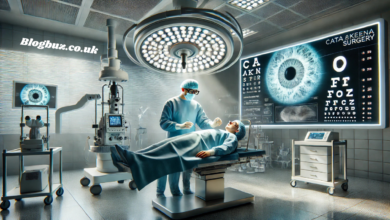Building Healthcare Portals with AEM Development: Ensuring Compliance and Usability

With developing digital landscapes, healthcare organizations need strong and safe delivery of smooth patient experiences through robust and secure platforms.
Adobe Experience Manager is a professional content management system that allows healthcare providers to create, manage, and optimize digital portals without much effort. Thus, with AEM, patient education through appointment scheduling can be done seamlessly and with strict follow-through of HIPAA, GDPR, and other data privacy laws that can affect user experience.
Security and usability are critical in healthcare portals, as patient data is very sensitive. This article explores how AEM helps healthcare organizations build secure, user-friendly portals by addressing key aspects such as:
- Compliance and Data Security
- Personalized Patient Experiences
- Seamless Integration with Healthcare Systems
- Scalability and Performance Optimization
By leveraging AEM’s capabilities, healthcare providers can enhance patient engagement while maintaining the highest security and compliance standards.
Understanding AEM for Healthcare
Adobe Experience Manager is a high-level content management system (CMS) that facilitates the development of a healthcare organization to deliver personalized, different types of digital experiences. Using AEM will advance patient engagement, facilitate easier provider communication, and maintain secured content across various platforms.
Key Capabilities of AEM for Healthcare
- Content Management -AEM enables the healthcare service provider to create, store, and manage significant medical content, always poised to be HIPAA compliant.
- Personalization -AEM uses artificial intelligence-driven insight to personalize patients’ experiences by creating customized health content around user behaviors and preferences.
- Seamless Integration – AEM integrates with electronic health records (EHRs), patient portals, and CRM systems to provide one user experience.
Why Healthcare Organizations Choose AEM?
- Enhanced Patient Portals – Delivers personalized content, appointment scheduling, and secure communication.
- Efficient Provider Platforms – Streamlines doctor-patient interactions and knowledge sharing.
By utilizing Adobe Experience Manager Services, healthcare organizations can deliver seamless, secure, and highly engaging digital experiences designed for patients and providers.
Compliance Considerations in AEM Healthcare Portals
Healthcare portals must adhere to strict regulations to ensure the safety, privacy, and accessibility of patient data. Solid features from AEM enable organizations to deploy seamless digital experiences while strictly following the key rules.
Key Regulations Affecting Healthcare Portals
- HIPAA (Health Insurance Portability and Accountability Act)
- Protects sensitive patient health information.
- It must ensure secure data storage, use encrypted communications, and have restricted access.
- GDPR (General Data Protection Regulation)
- Data privacy and security for the citizens of the EU are ensured.
- The user can control his data by viewing, editing, or deleting it.
- ADA (Americans with Disabilities Act)
- Digital accessibility by persons with disabilities.
- Healthcare portals should be able to support screen readers, keyboard navigation, and other assistive technologies.
How AEM Helps Meet Compliance
| Compliance Area | AEM Features |
| Data Security | End-to-end encryption, secure storage, and data masking to protect sensitive information. |
| User Access Control | Role-based access management to ensure only authorized users can view or edit data. |
| Regulatory Tracking | Built-in audit logs and governance tools to track and report compliance activities. |
| Accessibility Support | WCAG-compliant templates and tools to enhance digital accessibility. |
Enhancing Usability in Healthcare Portals with AEM
The Importance of UX in Healthcare Portals
User experience is a critical element in the current digital healthcare landscape. It ensures that patients and providers can easily access information and services. A well-designed portal would enhance engagement, reduce frustration, and improve healthcare outcomes. AEM is a powerful solution that streamlines these experiences to make portals more intuitive and accessible.
How AEM Improves Usability in Healthcare Portals
1. Personalized Patient Experiences
AEM leverages AI-driven content recommendations to provide patients with relevant health information, appointment reminders, and tailored resources. This personalization helps users navigate complex healthcare journeys more effectively.
2. Omnichannel Access
Patients and providers need seamless access to portals across devices. AEM allows cross-compatibility with mobile phones, tablets, and desktops to deliver responsive and consistent experiences at all login points.
3. Intuitive Content Authoring for Providers
Healthcare professionals need an easy way to manage content. With AEM’s user-friendly interface, providers can update information, publish announcements, and ensure compliance without requiring technical expertise.
AEM Streamlining Patient Journeys
A large health provider used AEM Development to create a user-friendly and streamlined portal. Patients could easily book appointments, check their medical records, and view personalized health updates. The administration burden was reduced, and the patients became more satisfied.
Best Practices for AEM Healthcare Portal Development
AEM’s healthcare portal development has focused on security, scalability, accessibility, and content management. Still, it depends upon best practices followed in an environment for a user-friendly experience in an easy, compliant process.
1. Security-First Approach
Portals must prioritize security when handling patients’ sensitive data. Data transfer should be safe through secure APIs and encryption policies and adhere to HIPAA or GDPR compliance requirements. Security audits and RBAC are also key to data security.
2. Scalability and Performance Optimization
AEM’s architecture can scale, but optimization for performance is critical. It uses caching strategies, CDNs, and lazy loading techniques to ensure it loads fast. Responsive design helps ensure the portal performs well on all devices and enhances the patient experience.
3. Accessibility Compliance
Ensure that the portal is accessible according to the WCAG guidelines, so every patient, irrespective of disability, can access health care. Take advantage of the accessibility features within AEM that enable screen readers, keyboard-only navigation, and proper color contrast for usability for all patients with disabilities.
4. Content Governance and Workflow Automation
Healthcare content requires frequent updates, from policy changes to new treatment information. AEM’s workflow automation streamlines approvals, version control, and publishing. Setting up structured content governance ensures accuracy, compliance, and efficiency in updates without delays.




